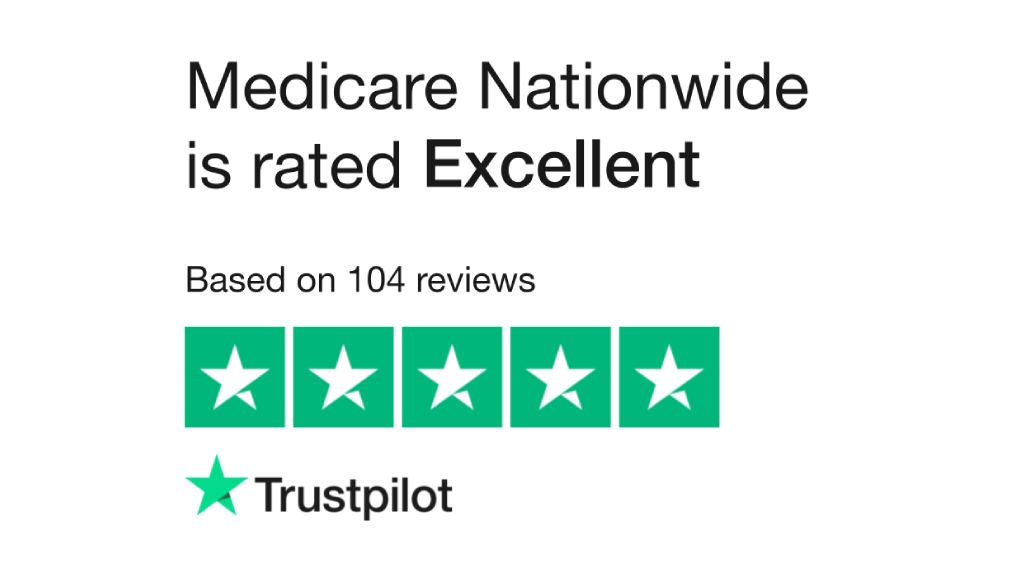What is Medigap Insurance?
Before jumping into how to compare plans, let’s go through the basics of what Medigap is.
Medigap is a common term to refer to Medicare Supplement plans.
Medicare Supplements are insurance policies approved and regulated by the federal government through Medicare. These Medicare policies are sold and administered through private insurance companies.
The purpose of Medigap plans is to provide coverage that Medicare does not. Many times these are not new coverages to Medicare but are designed to help with gaps in current Medicare coverage.
While Medicare is an excellent program and provides seniors access to healthcare in a much more affordable way than they would if they were to go to the private market, there can be significant out-of-pocket costs.
Once you begin examining the basic parts of Medicare such as Part A and B, you will find that deductibles, copays, and even excess charges can be high. There are limitations to how long you can receive hospitalization coverage and something needs to help make up the difference or you could be stuck with a massive medical bill at a time in life when you may not have the resources to pay.
This is where Medicare Medigap plans enter the picture. You have access to a wide variety of Medigap insurance policies that can help with all those out-of-pocket costs.
There are 10 Basic Medigap plans: Plan A, B, C, D, F, G, K, L, M, & N.
Each Medicare Supplemental policy has its unique set of coverages. The good news for consumers is that the content of Medigap plans is regulated and standardized by the federal government. So regardless of the company you are considered to purchase a plan from, you can confidently compare their plans to other companies and know you are getting the same coverages.
The only exception to this rule is three states. Massachusetts, Minnesota, and Wisconsin have unique regulated plans with differences from that standard 10 that are available in the other states.
Also, it is good to remember that not all companies are required to offer each Medicare Supplement plan. Many companies will only offer the most popular Medigap plans. If you find a plan that is not commonly offered, we can still help. We partner with hundreds of companies throughout the United States and can find you the options you need.
This appointment is meant to alleviate any concerns and there is no-cost or obligation to make a change.
How Should I Compare Medigap Plans?
A note before beginning tips on comparing Medigap insurance plans. There are two plan that no longer exists if you are new to Medicare. As of Jan 1, 2020, Medigap plans are not allowed to cover the part B deductible. Because of this, Plans C & are not available to those new to Medicare. However, if you entered into the Medicare system prior to this date. Those plans are still available to you, and you won’t be moved out of these plans if you have them today.
The easiest way to understand what Medigap plans offer is to look at a side-by-side chart. We have created a chart to understand what is covered under each plan.
Some of us are not visual, so here is a brief summary of each of the plans:
Medigap Plan A
This is the most basic plan of all Medigap plans. All plans are built of the base of Plan A. While coverage is limited in Medigap Plan A it does cover one essential coverage. It will cover the 20% that Medicare does not pay for outpatient treatments.
Medigap Plan B
Plan B covers everything that Plan A covers but picks up the Medicare Part A hospital deductible. Because of terminology, people will often confuse Plan B with Medicare Part B. They are completely different. Medigap Part B Medicare covers doctors and specialist visits. Plan B is the Medigap plan.
Medigap Plan C
Plan C is one of the more comprehensive plans of coverage. Again this is not available to those new to Medicare after Jan 2020. It covers everything but the Medicare excess charges.
Medigap Plan D
Plan D covers many of the same items as the plans above but does not pay the Part B deductible nor any excess charges. Excess charges can be expensive. As customers have realized, Plan D tends to be one of the least popular plans. Don’t confuse Plan D with Medicare Part D. Part D Medicare is the prescription drug coverage Medicare offers.
Medigap Plan F
Because of its comprehensive nature, Plan F has been the most popular Medigap plan. You can still get a Plan F policy if you entered Medicare prior to Jan 2020. It covers all the items you would normally pay out-of-pocket. This is the reason for its popularity among Medicare recipients.
Medigap Plan G
Plan G has slowly become the most popular plan especially since Plan F is no longer available for new Medicare subscribers. It covers everything Medigap Plan F does except for the Part B Deductible. Premiums are very competitive, and you will find that what you save in premiums is greater than what you would have spent on the deductible. This is exactly why people even chose this plan when F was still available to Medicare recipients.
Medigap Plans K, L, and M
We are lumping K, L, & M together because they are not as popular as the others. While they will cover many things each one eliminates certain benefits. For example, Plan K covers only 50% of most items and Plan L covers 75% of most items.
The reason that many people still choose these plans is that the premiums tend to be much cheaper than other plans. If your medical expenses are low and you have plenty of money set aside for unforeseen medical expenses these plans may save you money and are worth considering.
Medigap Plan N
Plan N is the newest of the Medigap plans. It was created in 2010. One of the main reasons that this plan has become popular is that it offers much lower premiums than other plans.
Lower premiums can be offered because you will be paying copays for things such as doctor and emergency room visits. It does not cover excess charges either.
What are the Differences in Medigap Plans?
Now that you’ve seen a brief comparison of Medigap insurance plans, it can still be overwhelming. What are the keys items and coverages you should focus on in picking a plan?
- 20% cost sharing for doctor visits. Is this something you can pay or do you need coverage to pick up this line?
- 20% cost sharing for lab tests and outpatient services.
- Hospital deductibles. Can you pay the deductible every time you are admitted to a hospital?
- Coinsurance costs. Every time you stay in a hospital or skilled nursing facility you will need to pay the coinsurance under Medicare. Do you need a plan that will pick this up?
- Reminder. Dental, Vision and Prescription drugs are not covered by any Medicare Supplement plans
Let’s look at each of the plans and how customers have chosen to purchase.
Medicare Supplement Plans A & B: Low Benefits, Higher Out-of-Pockets, Cheaper Premiums
While A & B offer some of the lowest premiums for supplements, the coverage is limited. Plan A offers basic benefits and B will cover the Part A deductible. The Part A deductible may be the biggest medical expense you could incur if you spend any time in a hospital. For each plan, you will have higher out-of-pocket costs and you have to ask yourself if the lower premiums worth it for lower coverage and bigger out-of-pocket costs.
Medicare Supplement Plans C, F, & G: Bigger Benefits, Higher Premiums
If you are new to Medicare after Jan 1, 2020, you will not be eligible to purchase Medigap Plans C & F. However, if you were a subscriber prior to that date those benefits are available to you.
These plans offer the most coverage of the Medicare Supplement plans. You will pay higher premiums for the comprehensive coverage, however, the reduction in out-of-pocket expenses may be worth it to your budget.
Medicare Supplement Plans K, L & M: Low Premiums with Self Insurance
The best way to think of these plans is to realize you commit to paying a large portion of your own healthcare. You are self-insuring a percentage of any medical costs. Each plan has a different portion that you take on in cost. If your finances although this cost-sharing, then thinking through this plan may be an option.
Medicare Supplement Plan N: Middle of the Road Premiums, Higher Co-Pays
This is a middle-of-the-road Medicare Supplement plan. It is slowly becoming one of the most popular plans due to the mid-range premium charges. You will pay co-pays for doctor office visits and emergency room visits in exchange for lower premiums than the more comprehensive plans.
Which Medigap Plan is Best for Me?
The best way to answer this question is to do an assessment of your medical expenses and try to project future expenses based on your current state of health.
We recommend speaking with a Medicare professional and coming with full openness regarding your healthcare needs and financial situations. After years of working in the Medicare industry, we can help clients wade through their needs and find the best product at the best value.
Can I Switch to a Different Medigap Policy?
Yes. You can switch to a different Medigap insurance policy. If you are not happy with your coverages or pricing, you can do a review of coverages and companies available to you and switch policies based on your new situation. Even if you are happy with your current coverage, we recommend shopping your plans every 2-3 years to find if you have the most competitive policies for the coverage you want.
When Should I Buy A Medicare Supplement?
This is critical. You need to buy a Medigap policy as soon as you are eligible for Medicare. Here is why. You have a special window of time where you can apply for a Medicare Supplement and be guaranteed coverage without having to go through company underwriting. You have a 6-month window, 3 months prior to your birthday when you turn 65, and 3 months after.
This special window is the ideal time to buy a Medigap policy. If you want outside of that window, you may be denied coverage if you have any health conditions or pre-existing concerns.
This appointment is meant to alleviate any concerns and there is no-cost or obligation to make a change.
Do I Have to Purchase Medicare Supplement Insurance?
No. You are not required to purchase Medicare Supplement insurance. Many other portions of Medicare are required such as being enrolled in Part A and Part B. You also are required to have some kind of prescription drug policy.
Even though it is not required by law to have a Medicare Supplement policy, we recommend it. The gaps in Medicare insurance coverage and the potential out-of-pocket are too great for most people to be without the extra coverage. We’ve given you a handful of tips when comparing Medigap insurance policies. We know the choices can be daunting.
Speak to one of our experienced Medicare professionals and they can help you sort through all the potential options you have.
We are an independent Medicare broker and represent hundreds of companies throughout the United States. We can quote and compare policies with multiple options so you can make an informed decision.
Contact us today, and let us help.
Prefer to chat by phone? Give us a call at 1-888-559-0103.


